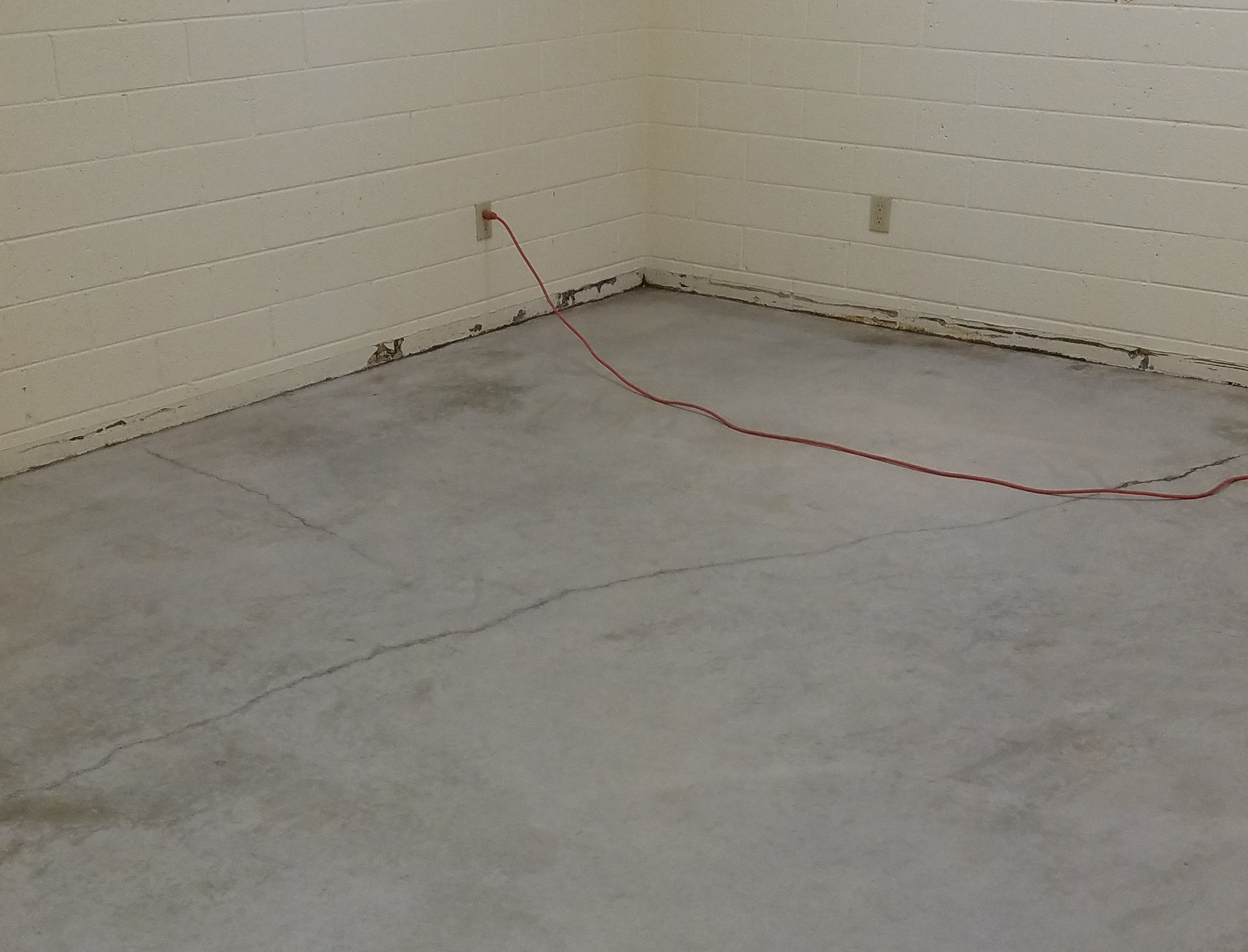Have you noticed those pesky hairline cracks snaking across your basement floor? It’s a common problem, especially in older homes. But don’t worry, fixing them isn’t rocket science! Cracking in basement floors is often a symptom of settling, shifting soil, or even minor temperature fluctuations. Knowing how to repair cracks in your basement floor not only improves the aesthetics but also prevents further damage. This guide dives deep into demystifying the repair process, offering you practical solutions and expert tips.

Image: www.familyhandyman.com
Repairing basement floor cracks is an essential preventative measure that ensures your home’s structural integrity and protects against future problems like water infiltration. Unchecked cracks can act like tiny gateways, allowing moisture to seep into your foundation, leading to serious issues like mold growth, wood rot, and even foundation deterioration. By understanding the underlying causes and employing proper repair techniques, you can effectively tackle this issue and keep your basement safe and dry.
Understanding Cracks: A Closer Look
Types of Cracks:
Before tackling repairs, it’s crucial to understand the different types of cracks and their potential implications.
- Hairline Cracks: These are thin, often spiderweb-like cracks that are typically less than 1/8 inch wide. They’re usually caused by minor settling, temperature fluctuations, or shrinkage of the concrete. These are usually the least worrisome.
- Structural Cracks: These wider cracks (typically 1/4 inch or more) are often accompanied by visible movement in the floor. They can signify more serious foundation issues requiring professional attention.
- Horizontal Cracks: Horizontal cracks running along the floor often indicate excessive moisture or hydrostatic pressure. They can also be signs of foundation problems.
- Vertical Cracks: These cracks, rising from the floor, can indicate foundation settlement or movement, necessitating professional inspection.
Identifying the Cause:
Determining the primary cause of the cracks is key to choosing the right repair method.
- Foundation Settlement: If the crack is accompanied by uneven floors, doors that stick, or noticeable movement in the foundation, it suggests foundation settlement.
- Shifting Soil: Cracks appearing after a heavy rainfall or long periods of drought could indicate soil movement or expansion.
- Temperature Fluctuations: Concrete naturally expands and contracts with temperature changes. Cracks in older homes could be due to this.
- Water Infiltration: Cracks often indicate leaks or moisture problems. Inspect your basement for signs of moisture, leaks, or dampness.

Image: clsa.us
Repairing Basement Cracks: Practical Solutions
Preparation is Key:
Before diving into repairs, make sure you have the right tools and materials on hand.
- Cleaning: A good cleaning is crucial to remove dirt, debris, and any existing patching materials from the cracks.
- Widening: Using a chisel or V-notch tool, carefully widen the cracks to allow for proper filling and adhesion of the repair material.
- Vacuuming: After widening, dust thoroughly with a shop vacuum to remove any loose particles.
Selecting the Right Repair Material:
The type of crack and its cause determine the most suitable repair material.
- Epoxy-Based Crack Repair: Epoxy is a strong, durable adhesive ideal for larger cracks or those prone to movement. It’s highly resistant to moisture and can withstand significant stress.
- Acrylic Crack Sealants: Acrylic sealants are a more flexible option, suitable for smaller, less active cracks. They’re easy to apply and often used for cosmetic repairs.
- Concrete Patching Compounds: For larger areas of damage or more severe cracking, concrete patching compounds offer a good, durable solution, often used in conjunction with reinforcing mesh.
- Caulk: For cosmetic repairs on minor cracks, caulk offers a quick and easy fix. However, it is not as durable as other options.
Repairing Techniques:
Each repair material comes with its own application techniques:
- Epoxy Injection: A specialized technique for injecting epoxy into larger, active cracks. This strengthens the crack and prevents further movement.
- Crack Filling: This involves filling the crack with the desired repair material, either using a putty knife or a caulking gun.
- Patching: For larger areas of damage, patch the area with a special concrete patching compound.
- Smoothing: Smooth the repaired area with a trowel or putty knife, ensuring a seamless blend with the surrounding floor.
- Painting: To match the floor, consider painting the repaired area with concrete paint or a similar color.
- Proper Drainage: Ensure proper drainage around the foundation to prevent water buildup and soil saturation.
- Gutter Maintenance: Regularly clean your gutters and downspouts to redirect rainwater away from the foundation.
- Landscaping: Plan your landscaping to avoid creating excessive soil pressure against the foundation.
- Regular Inspections: Schedule regular inspections to monitor for any new or worsening cracks.
- Extensive Cracking: If your basement floor is riddled with cracks, or if the cracks are large and deep, call a foundation specialist.
- Structural Damage: If the cracks are accompanied by signs of structural damage, like bowing walls or sagging floors, contacting a professional is crucial.
- Foundation Movement: If the cracks are widening or showing signs of movement, it’s time to call for a professional assessment.
Finishing Touches:
After applying the repair material:
Preventing Future Cracks: Taking Proactive Measures
Maintaining your basement and addressing underlying causes can help prevent future cracks.
When to Consult a Professional
While basic repairs can be done yourself, it’s wise to consult a professional for more serious issues.
How To Repair Cracks In Basement Floor
Conclusion
Fixing basement floor cracks is a DIY project you can manage with the right approach and tools. Understanding the type of crack and its root cause allows you to choose the most effective repair method. By following the steps and advice outlined in this article, you can restore your basement floor’s integrity and prevent future problems. Remember, preventative maintenance is key, so address any underlying issues to keep your basement structurally sound and free from unwelcome cracks. If you’re ever in doubt, don’t hesitate to consult a professional!





